The marine root of the people nicknamed Peony evading. Subsequently, the name so worked out that in some publications the plant just mentioned. The culture has long been perceived not only as a source of valuable raw materials for the production of drugs, but also as a decorative garden decoration.
Peony evaded, or Maryan Root is a grassy perennial to 1 m in the height, which belongs to the Peon Family. In natural conditions, culture decorates the endless territory of Altai, Mountains of East Asia and Tien Shan. In Russia, Peony Evasive grows in Siberia and the Komi Republic.
Maryan Root: General Description
The plant with the original nickname prefers the "breathable" soil, adequately tolerates cold and always stretches to the Sun, although it can grow in shaded corners. The natural medium of growth is the taiga meadows, edges and glads.
Peony evaded - a strong plant with a well-developed and highly branched root system of red-brown color. The mass of the root of individual copies of the marina root equals 6 kg! Straight perennial stems are decorated with large tube leaves, 3 - 5 pieces on each shoot.
During the flowering period, which lasts 2 weeks, from the plant not to tear the eye - the flowers of the marine root, very large (about 12 cm in the diameter), lush, pink-purple, abundantly cover the top of the bush. This beautiful picture is usually observed from the second half of May to the end of June. The fruits from the peony evading appear in August. An approximate life of the plant is 25 - 30 years. Admire the elegant simplicity of blooming marina root in the photo:
Maryan The root has long been famous for its anti-cultural and sedative properties. The alcohol tincture of peony Traditional medicine applies for the treatment of vegetual disorders, insomnia, hysterical, hypochondriac and neurotic states.
Maryan Root: Growing in open soil
For therapeutic purposes, the plant began to actively cultivate in the XVIII century, so the experienced gardeners are known all the secrets of its successful cultivation and reproduction in the garden. Peony evaded land like on the bright sun and in the shade, near the fruit trees. Optimal soil for the plant - loose, fertile, moderately moisturized. The only thing to take into account the gardener when meeting the marinen root - dislike plants to excess water and drafts. Powerful roots actively accumulate moisture, so the periodic moderate watering the peony is enough.
Landing, like a transplant, marina root is possible only in the autumn time. The landing place is prepared on average for the month. If the bushes are somewhat, then between them retain the gap to 1 m - in the future they will greatly grow up and they will need a lot of space. Personal parameters for landing are 50 × 50 × 50 cm. 2/3 pits fall asleep with a mixture of humus, peat, sand and garden land. Mix about 1 bucket of each component, then enriched the mixture with such additives:
- double superphosphate - 250 g;
- iron vitrios - 1 tbsp. l.;
- potash - 1 tsp;
- wood ash - 1 liter.
Free space is filled with fertile land. By the time the landing, the mixture is sprouting and then no longer seeks. If the hole was not prepared in advance, then in the process of planting it is filled with the soil gradually, well, and then watered.
In the first year after landing and transplanting, young peony dodging does not bloom. The plant looks dumbbell and weakened, besides, he has only 1 - 2 escapes. The second year is observed, as a rule, not too abundant flowering. However, this is not a reason for concern - the plant is still gaining strength. A more important indicator is the rate of growth of the marine root: for the second year, the number of stalks of the bush should increase to 3 - 6.
Maryan Root: Care recommendations
Given the priesthood nature of the plant, it is not difficult to care for him. However, some important recommendations must be diligently performed.
Main root lighting
Peony evasive grows perfectly on the open areas on the sun, but in the watches of the scribe, a small shading of the bushes will still not hurt. If you put a plant in a very shaded place, it does not bloom. Choosing a place for planting bushes, take into account the need of a marine root in free air circulation - the plant is not planted close to buildings, trees and other shrubs. Also carefully check the soil for groundwater: if by negligence to plant the peony evading in such a place, its roots rotate.
Watering a marine root
A part with watering plants Marine Root can not, otherwise it will disappear. At once, the adult bush drinks 2 - 3 buckets of water - it is such a volume of fluid that requires its large and developed root system. In order not to pour the water to the water, the peony bushes are carrying drainage pipes and pour water into them. The most careful of everything to the watering of the marine root belongs to the early spring, when buds are formed and the bush is prepared for flowering. Also cannot be allowed to dry out soil in August, during the bookmark of flower kidney.
After irrigating the land around the marina root, well loose. This simple procedure increases the moisture quality of the soil, stimulates aeration and prevents the active growing of weary grass.
Fucking marina root
Young bushes of peony make up the extraxornic method. Starting from mid-May, plants leaves 1 time per month watered from watering can with a universal mineral agent (for example, ideal) in the concentration indicated on the package. For feeding chosen a warm cloudy day or evening day. In order for the leaves as much as possible, the fertilizer is added to the fertilizer of the economic soap or washing powder at the rate of 1 tbsp. l. 10 liters of solution.
Adult copies of the marina root also do not do without fertilizer, especially in the period of active growth. To support the plant, from the middle of May, the extraxnealing feeder is carried out 3 times with a break of 3 weeks:
- the first time the urea solution (50 g per 10 liters of water) acts as feeding;
- the second time is a urea solution with microfertilizers (1 tablet by 10 liters of solution);
- the third time is a solution of microfertres (2 tablets on 10 liters of water).
PION also needs various root fake, depending on the growth phase. During the increase in the increase in growth, the plant essentially absorbs nitrogen; During the formation of buds and flowering - nitrogen, phosphorus and potassium; When laying flower kidney for the next year - phosphorus and potassium. Given this feature, the bush during the season is feeding 3 times:
- the end of March - the beginning of April - the nitrogen and potassium-containing mixture are laid out on the snow. Useful substances penetrate the soil due to molding water. For one large bush, there are enough 10 - 15 g of fertilizer;
- the end of May - the beginning of June - the bush is fed by a full mineral fertilizer in proportion of 10: 20: 10 (nitrogen, phosphorus and potassium, respectively) or replace it with a cowboat (1: 10) and avian litter (1: 25);
- 2 weeks after the completion of flowering - the peony is fed by a fertilizer based on phosphorus and potassium (15 g of each active substance). With the second and third feeding, the fertilizer is distributed over the furrows, dried around the bush, then spill the soil well in this place, after which the ground is falling asleep.
Trimming marina root
Shortly before frosts, the plant Maryan root is prepared for winter: the stalks need to be cut off almost to the earth itself and burn. The remaining hemps are sprinkled with ash - it will take 2 bush on one bush. Adult copies of a cape evading in winter do not cover.
Fighting pests and diseases of marina root
According to the reviews of gardeners, Maryn Root is distinguished by enviable disease resistance, but he, unfortunately, is sometimes sick. The main problem in the cultivation of a bearing of evading is gray rot. With the prophylactic goal, the plant is watered by the Bordeaux liquid (50 g per 10 liters of water). The preventive disease of the procedure begin to do in the spring when young shoots appear on the peony. The plant is treated three times with an interval of 10 - 12 days. Under each bush need to pour 2 - 3 liters of solution.
Another dangerous disease for Peony is rust. So that it was not, the leaves of the marine root are sprayed with a solution of copper chlorocycy (60 g per 10 liters of water), borobo liquid (100 g of 10 liters of water) or colloidal gray (100 g per 10 liters of water). So that fungicidal solutions are better delayed on smooth leaves, a slightly crushed shopping soap is added to the agent.
Maryan Root: Methods of breeding
Wild-growing peony evasive multiplied with a seed way. But in gardening it is much easier to get Maryn root not from seeds, but with the help of cuttings or the division of the bush, and the last option is the easiest and most effective. Consider every method in order.
Reproduction of marina root seeds
Peonies are evaded, obtained from seeds, begin to bloom only after 4 - 5 years. Fresh seeds in the ground are the most reliable, and then they will warm up to spring. Sit them at the end of summer, after preparing the soil - it should be loose and well moistened. If the seeds are not fresh (i.e., they lay for a while before landing), they will warm only on the second or even the third year.
Reproduction of marina root cuttings
This method of reproduction demonstrates quite good results. As a planting material, a healthy fragment of rhizomes with still not wondrous kidney is opposed. From the bush it is cut off in July, by September he usually time to root. We note however, that new plants of the marine root obtained by the drawing method are developing quite slowly and begin to bloom on average after 5 years.
Reproduction of marina root dividing bush
For such an event, not all bushes of peonies evading. Usually choose the strongest instance that has reached 3 - 4 years of age. The following factors are additional indicators of readiness for separation:
- the plant bloomed well;
- the plants are healthy, strongly developed shoots, their more than 7 pieces and all of them grow not from one point;
- the base of the bush occupies a plot of at least 7 cm;
- peony has a very strong rhizome, which calmly takes the procedure for dividing into several parts.
In the middle lane of Russia, the division of the bush of peony evading is best to schedule for the period from the second half of August to the second half of September. The reproduction procedure looks like this:
- The selected adult instance of the marine root is digging and cutting the stems at a distance of about 10 cm from the growth point.
- Rhizome plants are well washed under water, and then put in the shaded place. There the roots are dried, will become less fragile and will not break when they are divided.
- The root of peony shall be sophisticated with a sharpened clean knife into several parts. Thus, the rhizome is cut into several deteen, each of which will remain 2 - 3 sleeping kidneys and part of the root of at least 10 - 15 cm. All fragments must be approximately the same in size, since very small deceners are poorly surrendered and require constant attention.
- Before boarding, each part of the marine root needs disinfection. To do this, they prepare a dark pink solution of potassium mangartage and pour them the decens for 30 minutes. Alternatively, plant fragments can be as much time to hold in the infusion of garlic. After the disinfection procedure, the PION dodging at 10 to 12 hours is poured with a solution of heteroacexin growth stimulator (1 tablet on 10 liters of water). Then they wait when the material will completely dry and drag the depleting sections with coal powder.
Delivels treated properly disembarking in different landing pit. Each well is satisfied with a sand pillow. The plant deepens no more than 5 cm, fall asleep fertile land and wipes well. In the first winter, after planting the land around the seedlings, a layer of peat with a thickness of about 5 - 7 cm. With the arrival of heat, the mulch is not hurry to clean - you need to wait for the appearance of reddish sprouts on the bushes. Young shoots are very fragile and easily break. The mulch layer is sprung and loosen the soil when they are fixed enough.
In the first two years in a new place, all the strengths of young seedlings are aimed at forming and building the root system. In order for this process to be successful, seedlings are not allowed to bloom, otherwise the bloom will deprive them of the necessary energy for full-fledged development. Of these considerations, in the first year after landing, all buds from the marine root are plugged, and on the second year they leave only one or two.
Maryan root does not bloom: analyze errors
When the peony evasive was planted on the site exclusively for the decoration of the garden, his owner would be very upset if the plant in the laid time would not please him with his blossom. As a rule, the lack of timely flowering dictated by non-compliance with the landing agricultural engineering and the transplantation of the marine root. Here are inexperienced gardeners:
- Transplant an adult bush without prior division. In this case, the plant is hard to fit in a new place, its development occurs solely due to accumulated reserve forces in old roots. At the same time, the new root system is not formed, since there is no stimulation to development. As a result, Maryan root is so weaken, which stops in growth and, accordingly, it blooms very weakly or does not form buds at all. How to fix the error? The bush is digging again, cut it into several decene and sear them in all the rules of agrotechnology.
- When landing, the plant is planting too deep. The rhizome of the pair of evading cannot be plugged by more than 5 cm, otherwise the bustle will be difficult to bloom, although it will look quite healthy. To test this assumption, the land over the root is neatly removed. If the guessed confirmed, the corn root bush is digging in August, they divide into several parts and searmed, deepening every delle to 5 cm, no more.

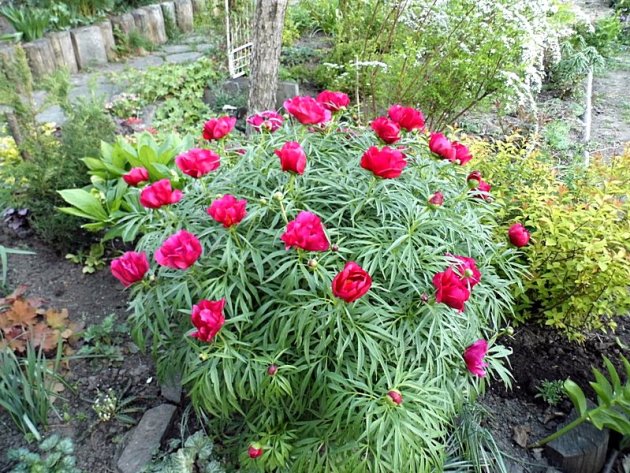
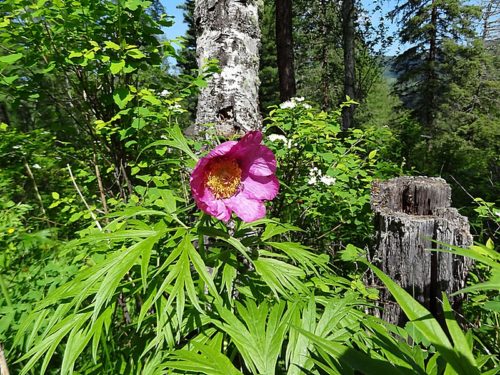
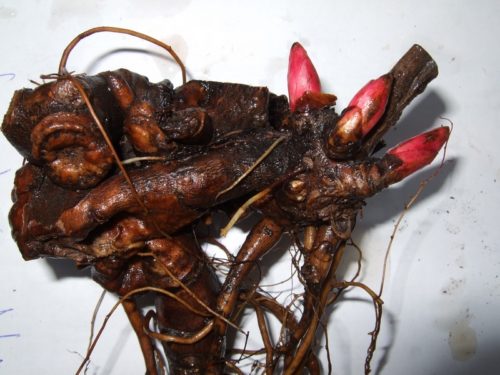
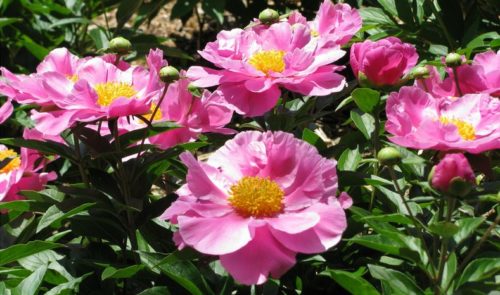
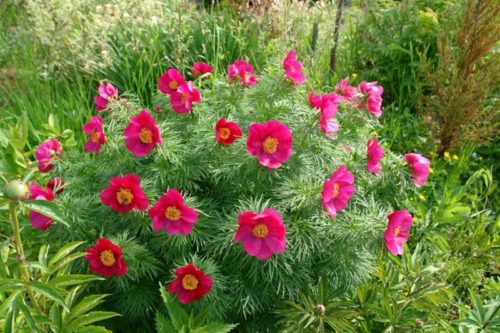
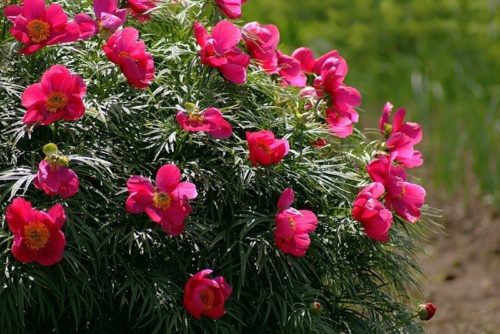
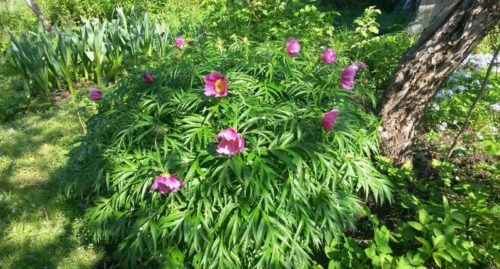
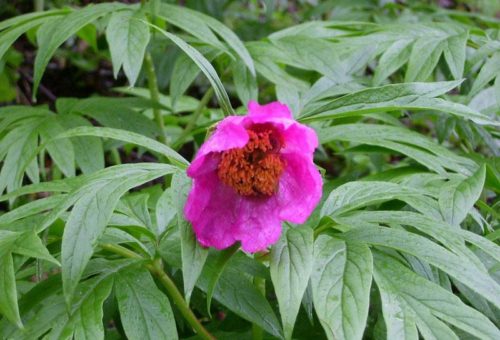
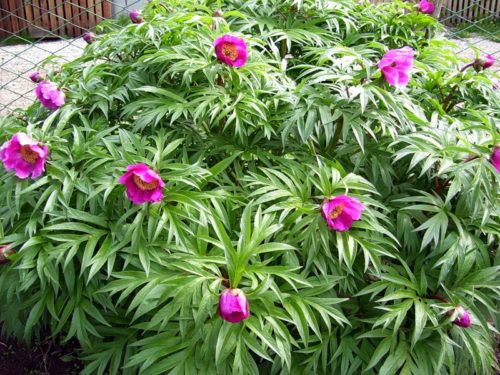
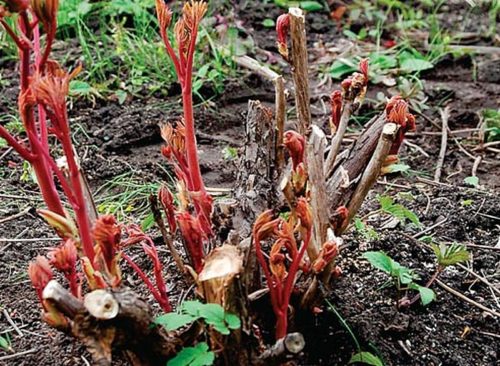
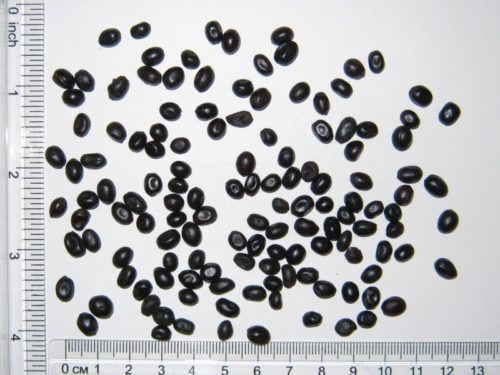

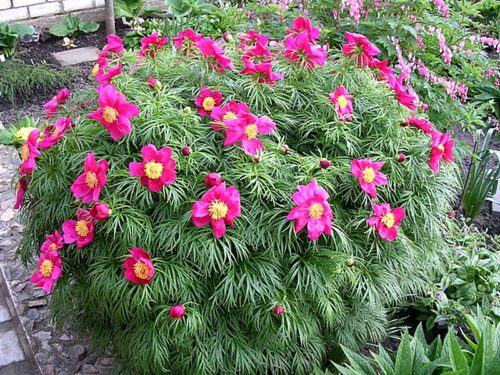
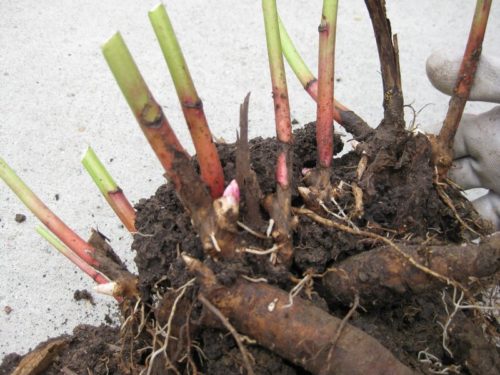
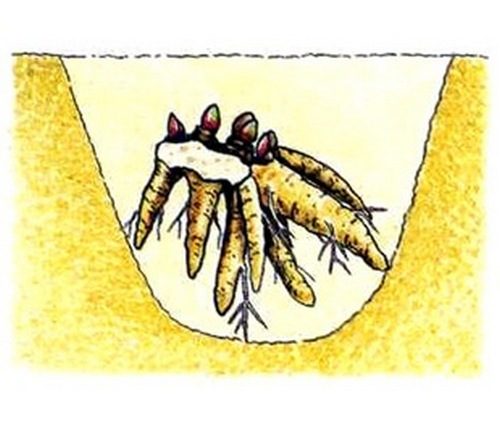












 Start a discussion ...
Start a discussion ...